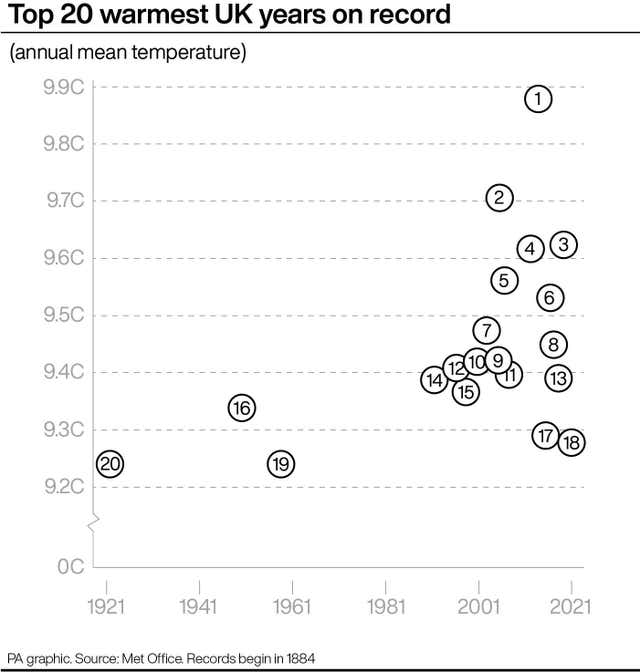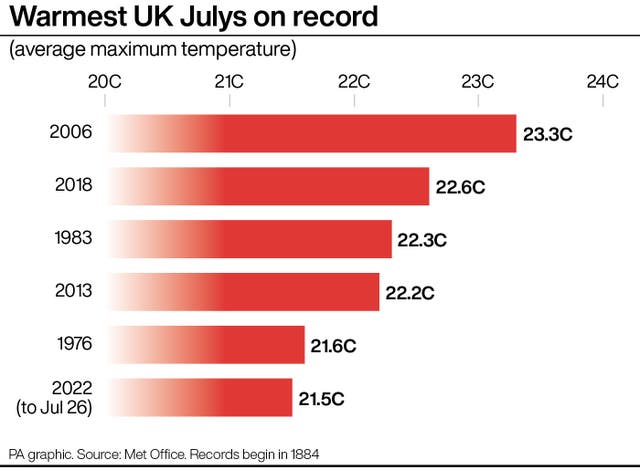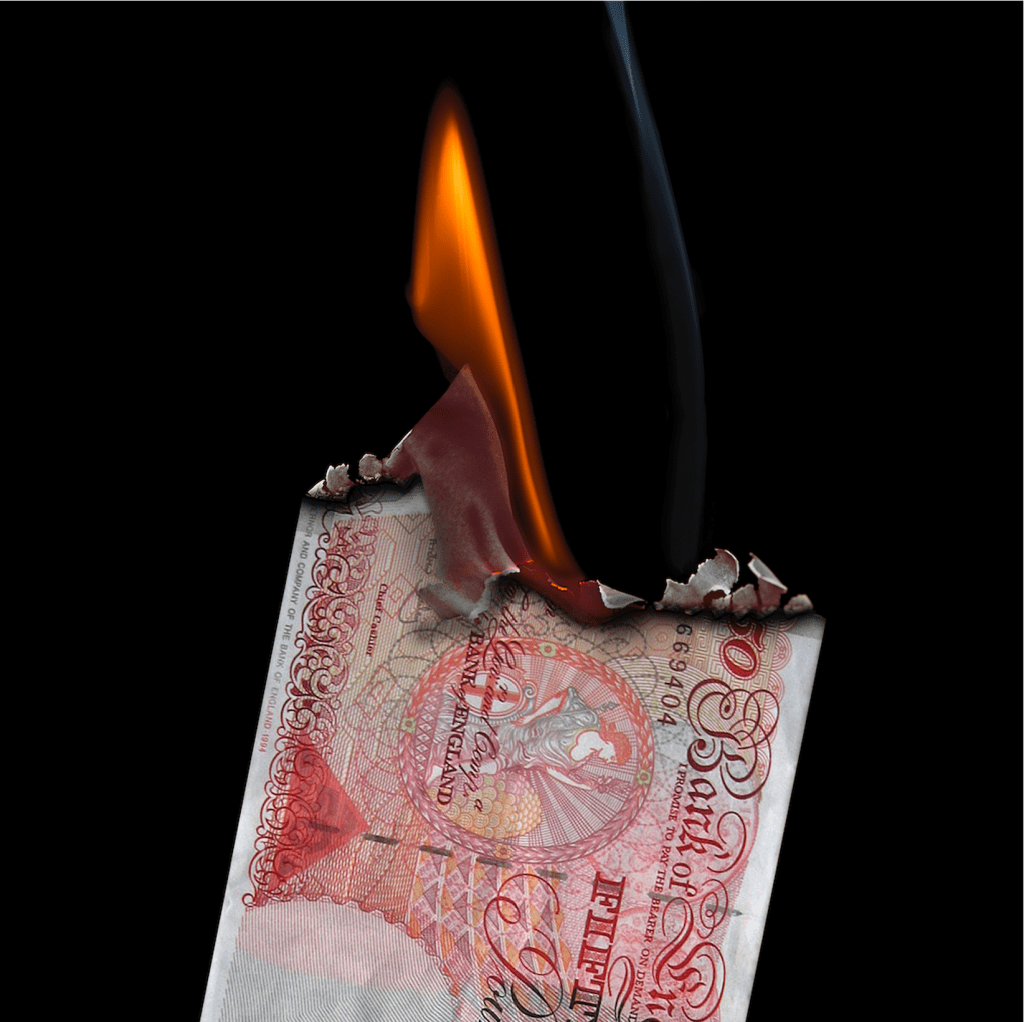Southern Water said the ban will be implemented in Hampshire and the Isle of Wight from August 5.
29 July 2022
The first hosepipe ban of the year is to come into force following the recent heatwave and one of the driest starts to the year on record.
Southern Water is to impose the temporary use ban on its customers in Hampshire and the Isle of Wight from Friday August 5.
This will mean hosepipes cannot be used to water gardens or clean cars, and ornamental ponds and swimming pools must not be filled.
The restriction is the first to be put in place in the region since 2012, although the company stressed there is “no direct risk to customer water supply”.


Alison Hoyle, director of risk and compliance at Southern Water, said river flows are down 25% as a result of one of the driest years on record.
She added that, as well as the reduced supply, the hot weather has led to an increased demand for water.
Dr Hoyle said: “We haven’t taken this decision lightly and we know the temporary use ban will have an impact on our customers.
“We’re working with the Environment Agency to ensure that we act responsibly to protect our environment.
“We’re asking everyone in Hampshire and the Isle of Wight to do their bit by supporting these measures and only use the water that they need.
“We’re experiencing one of the driest years on record for over a century and we’ve seen record temperatures.
“River flows are approximately 25% lower than they should be for July, which is equivalent to losing more than 25 million bathtubs of water.
“We’re asking our customers to help protect our rivers and the habitats that live there by cutting back their water use.
Thanks to everyone for using water wisely while demand is high.
When we all use less, we can make sure there’s enough to go around. It all makes a big difference.
Here are a few top tips, and for more, visit: https://t.co/sCM6ArRIwx #ReduceYourUse pic.twitter.com/soPubVkH4Z
— Southern Water (@SouthernWater) July 27, 2022
“We believe a temporary use ban is a responsible and vital step to reducing the amount of water being taken from the Rivers Test and Itchen.”
A Southern Water spokesman said the ban is directed at domestic users and will not affect essential commercial users such as garden centres.
He said: “The TUB is primarily focused on restricting domestic uses of water, but it also extends to certain non-essential water use activities relating to upkeep of grounds of public service buildings and non-commercial workplaces.
“For example, activities such as filling or maintaining an ornamental fountain, watering gardens, or cleaning paths and patios using a hosepipe at a workplace will be restricted.
“However, premises that have ponds with fish and other wildlife are able to carry on with any necessary water support to keep the environment healthy.”
An Environment Agency (EA) spokesman said most of England has moved to Prolonged Dry Weather status but most water companies are maintaining reservoir storage for summer demand.
The spokesman added that the EA was working closely with water companies to take precautionary action such as Southern Water’s ban to reduce unnecessary water use.
Warm temperatures and dry weather put pressure on our water system.
We are working closely with water companies to monitor water levels.
We use a range of measures to manage risks associated with dry weather, with many already in action.
Find out more: https://t.co/LAn6n9zELZ pic.twitter.com/XCTlamgW1b
— Environment Agency (@EnvAgency) July 26, 2022
He said: “The prolonged dry weather we are all experiencing this year has led to exceptionally low river flows across much of England and reservoir levels are falling across Yorkshire, central and south-west England.
“While recent extreme temperatures are now behind us, they have increased the likelihood of local impacts and have put pressure on the water environment and wildlife.
“The recent National Drought Group meeting was an important step in agreeing joint actions with water companies to manage water resources to ensure the needs of water users and the environment are met.
“Water companies are enacting their drought plans and taking further precautionary measures like temporary-use bans to maintain water supply.
“Environment Agency teams continue to work hard to monitor river levels, work with abstractors and respond to environmental incidents.”
A Water UK spokesman said: “Ongoing warm weather in much of the country follows the driest winter and spring since the 1970s.
“Water companies have detailed plans in place to manage water resources for customers and the environment, and are doing everything they can, including working closely with government and regulators, to minimise the need for any restrictions and ensure rivers continue to flow.
“As we continue to see extremely high demand, we are urging everyone to carefully consider the amount they are using given the unprecedented conditions.


“The water industry is running a national water-saving campaign called Water’s Worth Saving that provides the public with helpful hints and tips on how to do their bit with water use in the home and garden.”
This month so far has been England’s driest July since 1911, the Met Office announced earlier this week.
The latest data reveals there has only been 0.6in (15.8mm) of rain averaged across England, just 24% of the amount that would be expected in an average July.
The Met Office said that at this stage in the month – up to July 26 – the country would have expected well over three-quarters of the month’s rain to have already fallen in an average July.
Across the UK it has so far been the driest July since 1984, with an average of 1.5in (37.7mm) of rain, and it is the eighth driest in records stretching back to 1836.
The Met Office said it has not just been a dry July, but figures also show that England has had the driest eight-month period from November 2021 to June 2022 since 1976, when the country struggled with severe drought.
Over that period, just 16.6in (421mm) of rain has fallen across England – less than three-quarters (74%) of the 1991-2020 average of 22.4in (568mm).
A hosepipe ban has also been introduced on the Isle of Man by Manx Utilities, which said the measure, starting on Friday July 29, follows an extremely dry period and an increase in usage over recent weeks, despite a campaign to encourage residents to “use water wisely”.


The 2022 heatwave has led to comparisons with the summer of 1976 during which there were 15 consecutive days when temperatures reached 32C or higher somewhere in the UK, according to the Met Office.
By the middle of this week, there had only been three consecutive days when temperatures have hit 32C or higher – July 17, 18 and 19.
This year’s heatwave has seen temperatures climb much higher than in 1976, however. The peaks in 1976 were 35.6C in Southampton on June 28 and 35.9C in Cheltenham on July 3.
This year the temperature reached 38.1C in Santon Downham in Suffolk on July 18 and a record-breaking 40.3C in Coningsby in Lincolnshire on July 19.
South-east England clocked up 24 days of zero average rainfall between June 1 and July 24 this year, Met Office figures show. In the same period in 1976, the region experienced 36 days without rain.



